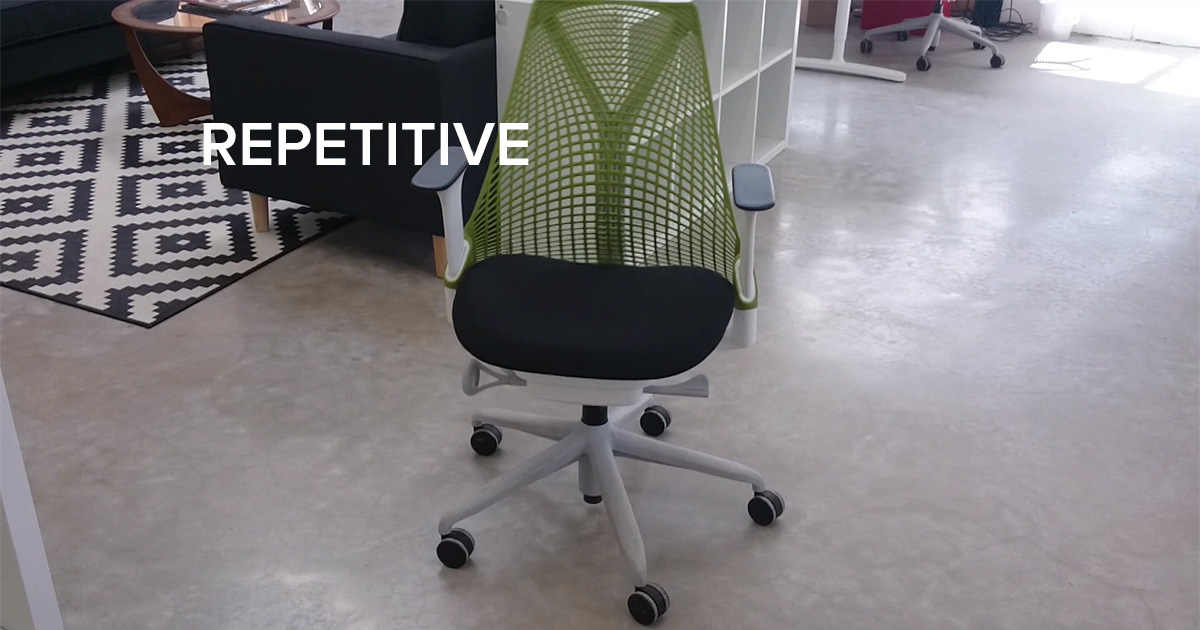So here’s the thing…
There’s one key reason that writing copy for visual content like infographics, scrolling websites or SlideShares is fundamentally different to writing white papers, brochures, or data sheets – you’re writing for three different audiences.
First, there’s your actual audience; the viewer. Your copy must translate easily into images that will leap off the screen. It needs to be engaging, entertaining and informative, but you’re not writing a screenplay – your copy must compel the viewer to take action.
Then there’s the client. Trying to visualise a 3D animated video, with a gripping voiceover, just from reading a Word document isn’t easy, so the copy needs to capture all the client’s messaging while helping them visualise how the final piece might look.
And finally there’s the designer. This poor sap will have to take your words and turn them into something beautiful, inspiring, and moving, so your copy must make it clear which elements need to be focused on and which can stay in the background.
So here are my tips for speaking to all three of your audiences and writing copy that will become not just great visual content, but effective visual content.
1) Keep it concise
Don’t use any more words than you absolutely have to.*
2) Use visual metaphors. But don’t mix them…
Metaphorical language can be a useful way to give cues to designers as well as viewers, particularly in dynamic content like kinetic typography or whiteboarding videos. Using words that lend themselves to animation or illustration (like ‘accelerate’, ‘spiral’, or ‘KA-BOOM!’) will make a designer’s life a lot easier while adding impact to your message. If the designer is confident in illustrating the message, the design will communicate that confidence and the content piece will be far more effective as a result.
A prolonged metaphor can help guide your audience on the journey you’re asking them to take with you, but be consistent – mix your metaphors and you’ll and up confusing the designer and your audience. If you open by talking about ‘building’ something, don’t get distracted and start ‘driving’ it – that’s’ a helluva building you’ve got there, buddy.
3) Grab attention – and then keep it
“So you’ve made a SlideShare? I’m very pleased for you – but why should I read it? It’s called ‘178 Reasons Our Network Infrastructure Optimization Solution Is Much More Brillianter Than Yours’, you say? Thank you, but no.”
Content marketing behemoth Doug Kessler has forgotten more about SlideShare than most of us will ever know, and one thing he’s absolutely certain of is that you must earn every click. Grab your reader’s attention from the start and don’t let them out of your vice-like grip until the end.
Ideally your audience should need to have a lie down afterwards to recover from the emotional journey they’ve just undertaken, but failing that, a ‘like’ would be nice (and a ‘share’ would better). How do you do that? A design budget roughly the size of the GDP of a small country would be ideal, but it’s what you’re saying that really matters, so every word has to earn its place on the slide and every slide must propel your story forwards.
The same applies to animated videos; a moment’s pause in the narrative trajectory and your viewers will be off. Get ‘em in the seat and keep ‘em there.
4) Make it readable
If your copy doesn’t sound right, it probably won’t look right, so think of readability above all else, whether for on-screen text or audio.
Here’s a sentence from a video voiceover I was once presented with and asked to “tidy up a bit”. Try reading it aloud:
“Three types of virtualisation simplify application consolidation to significantly increase server utilisation.”
Difficult, wasn’t it? Now try this instead:
“With three types of virtualisation, it’s much simpler to consolidate your applications – and increase server utilisation.”
Same message, but a comma and an en-dash now break the sentence up into manageable pieces, making it easier to read aloud. And if it’s easier to read, it’s easier to understand, which will help you communicate complex B2B tech messaging in a clear and engaging way.
Incidentally, one of my favourite topics of conversation (I’m quite a raconteur, as you can probably tell) is that in marketing copy, punctuation serves a very particular purpose. Clarity is everything; grammar is secondary. Punctuation should be used to create pauses for the reader or add impact to a sentence – never underestimate the power of a well-placed en-dash.
So there you have it…
Keep these four things in mind and you’re all set to go out and write copy that won’t make designers break into a cold sweat. Copy that will overwhelm your client with a warm glow of joy (and generosity). And copy that will become visual content that engages your viewers, offers them something of genuine value, and makes them take action.
*It’s visual content, so let the visuals do the talking. Copy should be used to set context, provide explanation, or simply to label the visual elements. Of course, I’ve cheated here, but that’s okay because this is a blog post, not a dynamic parallax scrolling website.
Striking copy
Need B2B copywriters who can write compelling visual content? Content writers who get your brand, your industry, and your audience? Get in touch.



